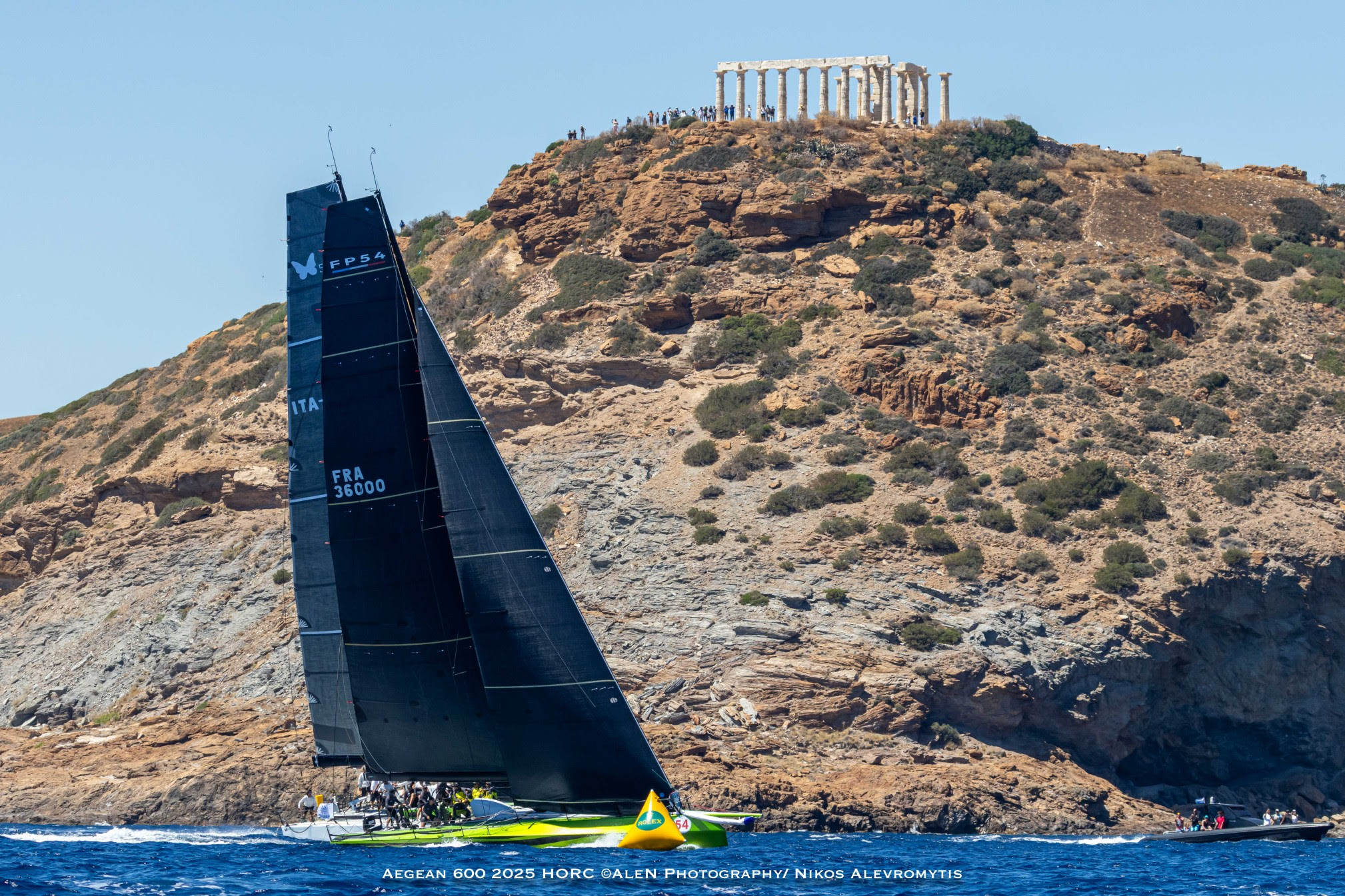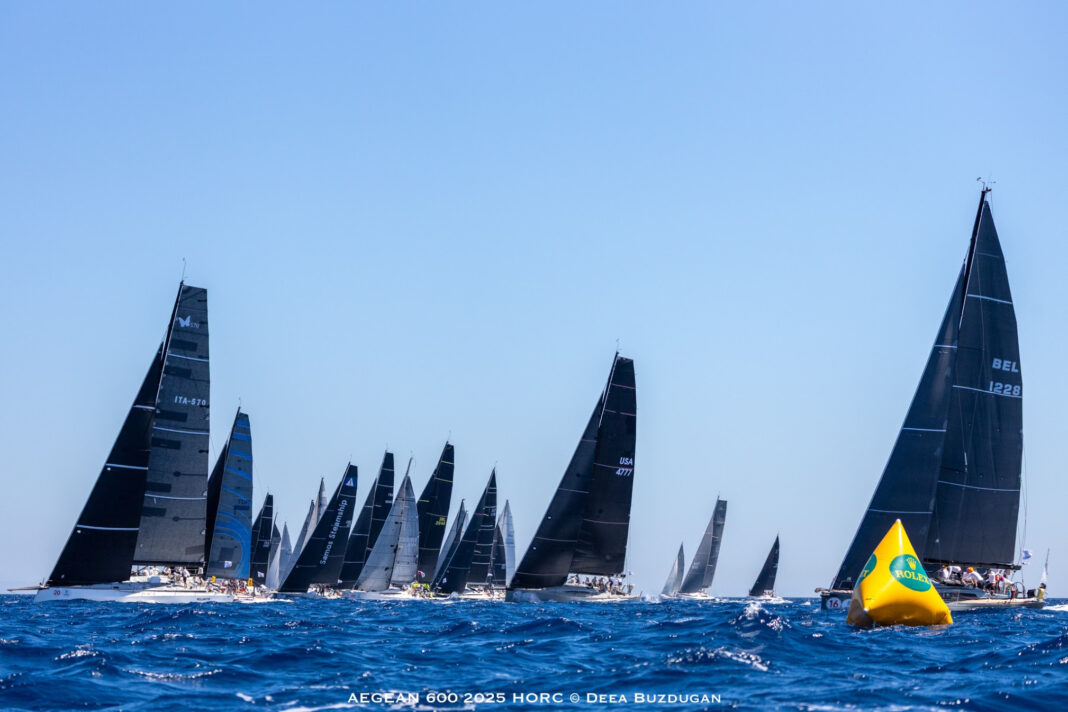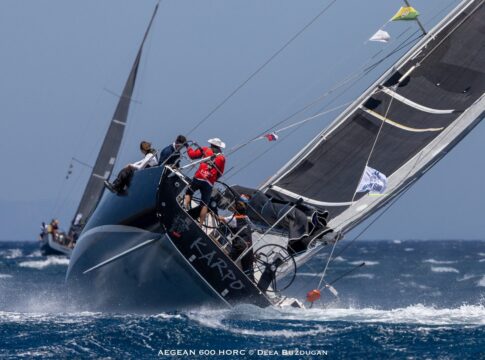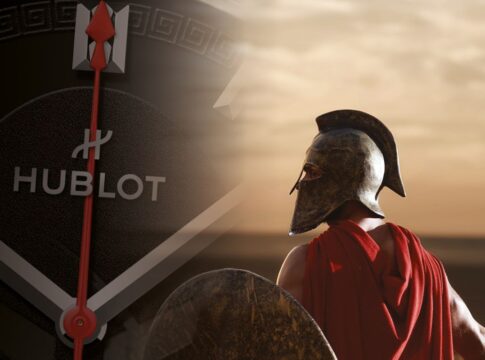At the very southern tip of the Greek mainland, near Cape Sounion in Attica, the start of the 5th edition of the AEGEAN 600 unfolded in perfect fashion: cloudless blue skies, crystal-clear waters, and a steady 12–15 knots of northerly wind to propel the fleet on their upcoming 605-mile odyssey through the Aegean Sea.
Race managers from the Hellenic Offshore Racing Club set the fleet off in three waves: 8 Multihulls, 4 Maxis, and then the remaining 46 Monohulls, scored under IRC and ORC. All yachts passed along the cliffside shoreline in front of the 2,500-year-old ruins of the Ancient Temple of Poseidon, where spectators enjoyed an aerial view as the teams left the Rolex buoy to starboard before bearing off, hoisting spinnakers, and surging south toward Milos, the first of 23 islands they will pass on this legendary course.
Olympic Marine and the Region of Attica are co-organizers of this year’s race, with Rolex as the official timepiece. Race sponsors include the Greek National Tourism Organization and D. Koronakis SA. This year, Mercedes-Benz has joined the AEGEAN 600 as the event’s Official Mobility Partner.
The fastest boats – George Procopiou’s Volvo 70 AIOLOS (GRE) in the Maxi Monohull class and Adrian Keller’s 86-foot (25-meter) catamaran ALLEGRA (SUI) in the Multihull division – quickly surged to the front of the fleet, clocking double-digit speeds, with the remainder of the fleet giving chase.
Yet by sunset, the conditions had already begun to change. The glorious northerly breeze that defined the start and afternoon began to fade and shift westward, ushering in a light-air evening with wind speeds dropping into low single digits. This marks the first challenge in what has always been a race filled with demanding elements of offshore competition: sail trim, seamanship, navigation, and tactics.
Read Also: AEGEAN 600 5th Edition Sets Sail with Strong Winds and Signature Greek Hospitality
The current forecast predicts the light winds will shift again later tonight and throughout tomorrow, as the fleet sails southeast past Milos toward the iconic volcanic caldera of Santorini. From there, the course continues southeast toward Kassos, the next island near the southern end of the route.

Interestingly, the forecast calls for westerly winds in this section of the course at a comfortable 15–20 knots, a welcome change from the gale-force northerlies and high seas often seen in previous editions.
Regardless of how the weather evolves, this race is already living up to its reputation as one of the most captivating classic 600-milers in the offshore racing world.





